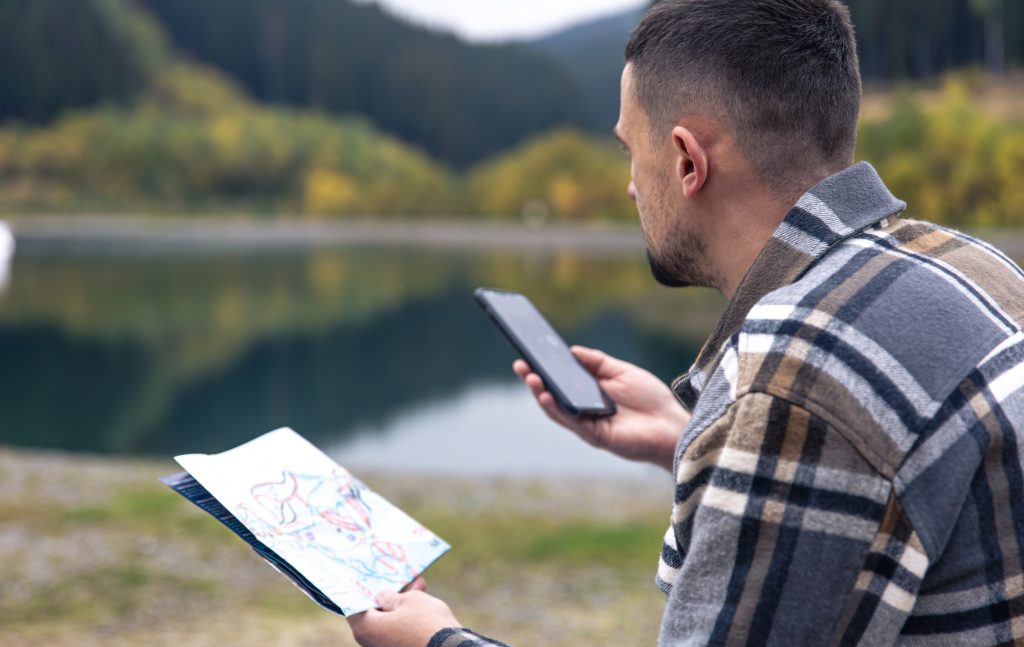How to Track What Truly Distracts You
Emma Brooks July 10, 2025
In today’s fast-paced world, distractions are everywhere. From constant notifications to multitasking, it’s easy to lose focus and fall off track. However, the real challenge is not just in recognizing distractions, but in understanding what truly distracts you. By learning to track what truly distracts you, you can take back control of your attention, improve productivity, and enhance your mental clarity.
Tracking your distractions is more than just counting the number of times you check your phone. It’s about uncovering the deeper sources of distraction, whether it’s external stimuli or internal thoughts, and finding ways to minimize their impact. In this article, we’ll explore how tracking distractions can improve focus and productivity, as well as provide actionable tips for identifying and reducing what really pulls your attention away.
In this article, we’ll explore the importance of tracking distractions, why it’s harder than ever to stay focused, and how you can begin tracking what truly distracts you to improve your focus and achieve better results.

The Science Behind Distractions
Distractions can have a major impact on cognitive function and mental clarity. Research from the American Psychological Association reveals that even small interruptions can significantly reduce productivity. The act of refocusing on a task after a distraction takes time, which can lead to cumulative mental fatigue over the course of the day.
Key findings:
- The Switch Cost: When you shift from one task to another, there’s a cognitive cost. Studies show that it takes an average of 23 minutes to fully regain focus after an interruption.
- Task Switching and Mental Fatigue: Constantly switching between tasks wears out your brain. The Journal of Experimental Psychology found that task-switching can increase cognitive load, making tasks seem more mentally exhausting and decreasing overall productivity.
Understanding the science behind distractions is the first step to effectively managing them. By tracking your distractions, you can begin to identify patterns and take steps to mitigate their impact on your work.
Why Tracking Distractions Is Key to Increasing Focus
It’s easy to overlook distractions when we’re caught up in our daily routines. However, tracking them gives us critical insights into our behavior and helps us optimize our environment for better productivity. Here’s why tracking distractions is so important:
1. Recognizing Hidden Distractions
Not all distractions are as obvious as a notification or an incoming email. Often, distractions can be subtle and internal, like daydreaming, intrusive thoughts, or worrying about tasks you haven’t completed. By tracking distractions, you can uncover these hidden sources and address them before they take over.
2. Understanding Your Attention Cycles
We all have natural attention cycles throughout the day. Some people are more focused in the morning, while others peak in the afternoon or evening. Tracking distractions helps you recognize when your attention naturally wanes, so you can plan more effectively.
3. Reducing the Cognitive Load
Tracking distractions gives you a clearer picture of how much energy and time is lost during the day. By quantifying distractions, you can better manage your workload and break tasks into smaller, more manageable chunks to minimize the cognitive load.
4. Building Healthy Habits
When you track your distractions, you’ll start to recognize patterns in your habits. This can help you identify distractions that are habitual—such as checking your phone every few minutes—and make conscious changes to break those cycles and replace them with more productive behaviors.
How to Track What Truly Distracts You
Now that we understand the importance of tracking distractions, let’s dive into how you can effectively track them in your daily life.
1. Start with a Distraction Journal
One of the simplest ways to track distractions is by keeping a journal. Whenever you’re distracted, write down:
- What you were doing
- What distracted you (e.g., phone, email, thought)
- How long the distraction lasted
- How you felt afterward (e.g., frustrated, guilty, or re-engaged)
By keeping track of this information for a week or two, you’ll begin to see patterns in your distractions. Are certain tasks more likely to lead to distractions? Do you get distracted at specific times of day? This insight will help you address the root causes.
2. Use a Time-Tracking App
There are many time-tracking apps designed to help you monitor how you spend your day. Apps like Toggl, RescueTime, and Clockify can help you log your activities in real-time and provide reports on where your time is going. Some of these apps also allow you to categorize activities as “productive” or “distracting,” making it easier to identify which activities are stealing your focus.
Benefits of using time-tracking apps:
- Real-time tracking allows you to immediately identify when you get distracted.
- Automated reporting provides insights into how much time you’re spending on distractions.
- Categorization helps you separate productive and non-productive activities.
These tools help you gain a clear picture of your workday, making it easier to eliminate distractions and optimize your schedule.
3. Use the Pomodoro Technique
The Pomodoro Technique involves working in focused intervals of 25 minutes, followed by a 5-minute break. After four intervals, you take a longer break. This technique helps you stay focused on tasks while also giving you time to reset.
By using a Pomodoro timer, you can track how often you’re interrupted during your 25-minute work intervals. When you get distracted, simply pause the timer and note the distraction. Over time, you’ll learn which activities or habits are most likely to derail your focus.
4. Set Goals and Reflect
At the end of each day, take a moment to reflect on what worked and what didn’t. Did you accomplish your goals? What were the biggest distractions that kept you from focusing? How can you adjust tomorrow to minimize these distractions?
Setting specific goals each day helps you stay focused, and reflecting on your performance allows you to make adjustments. This simple practice will help you build better habits and minimize distractions in the long run.
Overcoming Common Distractions
While tracking distractions is essential, it’s also important to implement strategies for reducing or eliminating them. Here are some proven methods to tackle common distractions:
1. Minimize Digital Distractions
Technology is one of the biggest distractions in the modern world. To minimize digital interruptions:
- Turn off non-essential notifications (social media, emails, etc.).
- Use “Do Not Disturb” mode on your phone or computer when you need to focus.
- Use website blockers like Freedom or Cold Turkey to limit access to distracting websites during work hours.
2. Create a Dedicated Workspace
Having a dedicated workspace can significantly reduce distractions. If possible, separate your work area from other areas of your life (like your bed or living room). This physical boundary will help train your brain to associate your workspace with focus and productivity.
3. Set Boundaries with Others
If you work in a shared space, it’s important to set boundaries with those around you. Let others know when you’re in a focused work session and when you’re available for breaks or discussions.
Conclusion
Tracking your distractions is the first step to regaining control over your attention and improving your productivity. By using tools like distraction journals, time-tracking apps, and productivity techniques like Pomodoro, you can start to identify the true sources of your distractions and implement strategies to minimize them.
Remember, distractions aren’t inherently bad—they’re a natural part of life. However, by tracking and understanding them, you can ensure that they don’t take over your workday. With a little effort and the right tools, you’ll be able to reclaim your focus and achieve your goals more effectively.
References:
- Psychology Today (2020). How to Overcome Distractions and Improve Focus.
https://www.psychologytoday.com - Harvard Business Review (2019). Mastering Your Attention: The Key to Peak Performance.
https://hbr.org - Jon Kabat-Zinn (2013). Mindfulness for Beginners: Reclaiming the Present Moment—and Your Life.
https://www.soundstrue.com





